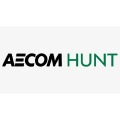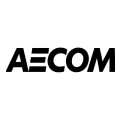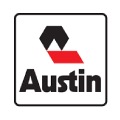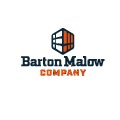
Index
Applications & Benefits of GAO’s RFID, BLE, IoT & Drones for Infrastructure Construction Industry
GAO’s Assists Clients with Standards, Mandates & Regulations of Infrastructure Construction Industry
GAO Software Provides Easy Integration with API
Case Studies of RFID, IoT & Drone Applications
GAO RFID Systems & Hardware for Infrastructure Construction industry
GAO Makes Efforts to Satisfy Customers
GAO Has Served Infrastructure Construction Industry Extensively
Overview
The infrastructure construction industry is responsible for the planning, design, and construction of the physical structures and systems that support a country or region’s economy and daily life. This includes roads, bridges, airports, water systems, energy grids, and telecommunications networks. It is also a major source of government revenue, as governments often fund infrastructure projects through taxes and bonds. The infrastructure construction industry is facing several challenges, including rising costs, labour shortages, and environmental regulations. However, the industry is also seeing several trends that are driving growth, such as the need for new infrastructure in developing countries and the increasing demand for sustainable infrastructure.
GAO’s RFID, BLE, IoT, and drone technologies have helped its customers in the infrastructure construction industry to improve their work processes, their operations and productivity by better management of their staff, materials and operational equipment such as excavators, bulldozers, graders loaders, tower cranes pile drivers, dump trucks, concrete mixers, asphalt pavers, compactors.
Ranked as one of the top 10 global RFID suppliers, GAO RFID Inc. is based in New York City, U.S. and Toronto, Canada. GAO offers a comprehensive selection of UHF, HF (including NFC) and LF RFID (radio frequency identification) readers and tags, BLE (Low Energy Bluetooth) gateways and beacons, and various RFID and BLE systems such as people tracking, asset tracking, access control, parking control, fleet management, WIP (work in progress), traceability. Such RFID and BLE products and systems, as well as its IoT and drone technologies, have been successfully deployed for infrastructure construction industry. Its sister company, GAO Tek Inc. https://gaotek.com, is a leading supplier of industrial or commercial testers and analyzers, drones, and network products.
The targeted markets of both GAO RFID Inc. and GAO Tek Inc. are North America, particularly the U.S., Canada, Mexico, and Europe. As a result, this website gaorfid.com is offered in English and other major languages of North America and Europe such as Spanish, French, German, Italian, Polish, Ukrainian, Romanian, Russian, Dutch, Turkish, Greek, Hungarian, Swedish, Czech, Portuguese, Serbian, Bulgarian, Croatian, Danish, Finnish, Norwegian, Slovak, Catalan, Lithuanian, Bosnian, Galician, Slovene, Latvian, Estonian, Welsh, Icelandic, and Irish.
Applications & Benefits of GAO’s RFID, BLE, IoT & Drones for Infrastructure Construction Industry

To satisfy its customers, GAO’s RFID or RFID Systems for Farm Product Raw Material Merchant Wholesalers are offered in 2 versions. One version is that its software is running on a local server that normally is on our client’s premises, and another version runs in the cloud. The cloud server could be GAO’s cloud server, client’s own cloud server or a cloud server from one of the leading cloud server providers such as Amazon Web Services (AWS), Microsoft Azure, Google Cloud, IBM Cloud (formerly SoftLayer), Oracle Cloud, RedHat, Heroku, Digital Ocean, CloudFlare, Linode and Rackspace. The above illustrates the GAO system for infrastructure construction industry.

The above illustrates the GAO system for infrastructure construction industry.
GAO’s RFID and BLE technologies, consisting of RFID readers, RFID tags, BLE gateways, BLE beacons, software, cloud services and their systems, have the following applications in the infrastructure construction industry:
- Asset tracking: GAO’s RFID tags can be attached to construction materials and equipment to track their location and movement throughout the construction process. This can help to prevent theft and loss, and it can also help to improve efficiency by ensuring that materials are always in the right place when they are needed.
- Inventory management: GAO’s RFID tags can be used to track the inventory of construction materials and equipment. This can help to ensure that the right materials are always available, and it can also help to prevent overstocking and understocking.
- Access control: GAO’s RFID tags can be used to control access to restricted areas of a construction site. This can help to improve safety by preventing unauthorized personnel from entering these areas.
- Workforce management: GAO’s RFID tags can be used to track the movement of workers on a construction site. This can help to improve safety by ensuring that workers are in the right place at the right time, and it can also help to improve productivity by tracking the time that workers spend on different tasks.
- Quality control: GAO’s RFID tags can be used to track the quality of construction materials and workmanship. This can help to ensure that the finished product meets the required standards.
- Maintenance and repair: GAO’s RFID tags can be used to track the maintenance and repair history of construction assets. This can help to ensure that assets are properly maintained and that repairs are made in a timely manner.
GAO’s drone technologies find the following applications in the infrastructure construction industry:
- Real-time monitoring: GAO’s IoT sensors can be used to monitor construction sites in real time, tracking things like temperature, humidity, and vibration. This data can be used to identify potential problems early on, preventing costly delays and accidents.
- Asset tracking: GAO’s IoT tags can be attached to construction materials and equipment to track their location and movement throughout the construction process. This can help to prevent theft and loss, and it can also help to improve efficiency by ensuring that materials are always in the right place when they are needed.
- Workforce management: GAO’s IoT devices can be used to track the movement of workers on a construction site, monitoring their location, activities, and exposure to risks. This data can be used to improve safety by ensuring that workers are in the right place at the right time and by identifying potential hazards.
- Predictive maintenance: GAO’s IoT sensors can be used to monitor the condition of construction equipment, tracking things like vibration, temperature, and usage. This data can be used to predict when equipment is likely to fail, preventing costly breakdowns.
- Automation: GAO’s IoT devices can be used to automate tasks on construction sites, such as controlling machinery and monitoring environmental conditions. This can help to improve efficiency and safety by reducing the need for human intervention.
- Sustainability: GAO’s IoT sensors can be used to monitor the environmental impact of construction projects, tracking things like energy consumption and waste production. This data can be used to make improvements to the sustainability of construction practices.
GAO’s IoT technologies, consisting of IoT sensors, sensors networks and systems, find the following applications in the infrastructure construction industry:
- Real-time monitoring: GAO’s IoT sensors can be used to monitor the progress of construction projects in real time, providing valuable insights into productivity, safety, and other factors. For example, sensors can be used to track the location of materials and equipment, the amount of work completed, and the time spent on each task. This information can be used to identify potential problems early on and take corrective action before they cause delays or safety hazards.
- Safety: GAO’s IoT devices can be used to improve safety on construction sites by monitoring for hazards such as falls, unauthorized access, and equipment malfunctions. For example, sensors can be used to track the location of workers and equipment, and to detect vibrations that could indicate a structural failure. This information can be used to send alerts to workers and to take preventive measures.
- Asset tracking: GAO’s IoT can be used to track the location of assets on construction sites, such as materials, equipment, and vehicles. This information can be used to prevent theft and loss, and to ensure that assets are used efficiently. For example, sensors can be attached to materials and equipment to track their movement around the site. This information can be used to identify areas where materials are being wasted or where equipment is not being used.
- Environmental monitoring: GAO’s IoT can be used to monitor environmental conditions on construction sites, such as air quality, noise levels, and water quality. This information can be used to ensure that construction projects are environmentally sustainable and do not have a negative impact on the surrounding community. For example, sensors can be used to monitor air quality and noise levels to ensure that they are within safe limits.
- Automation: GAO’s IoT can be used to automate tasks on construction sites, such as material handling, equipment operation, and quality control. This can help to improve efficiency and productivity, and to reduce the risk of human error. For example, sensors can be used to control the movement of materials and equipment, and to monitor the quality of construction work.
- Cost savings: GAO’s IoT can help to save money on construction projects by improving efficiency, reducing waste, and preventing accidents. For example, by tracking the location of materials and equipment, IoT can help to prevent theft and loss. By monitoring environmental conditions, IoT can help to ensure that construction projects are environmentally sustainable. And by automating tasks, IoT can help to reduce the need for human labour.
GAO’s Assists Clients with Standards, Mandates & Regulations of Infrastructure Construction Industry
GAO RFID Inc. has developed its products and systems in compliance with industry standards and mandates. GAO has assisted our customers in Infrastructure Construction Industry to deploy RFID, BLE, IoT and drone systems and to ensure such deployments complying with applicable industry standards, U.S. government regulations and Canadian government regulations such as:
RFID, BLE, IoT, & Drone Standards & Mandates
- ISO 18000-6C
- Bluetooth SIG
- Bluetooth 5.0
- MQTT
- HTTP
- ASTM F3320
- ISO 21387
- The European Union (EU)
- The United States (US) Department of Defence (DoD)
- The International Organization for Standardization (ISO)
Government Regulations
- Federal Acquisition Regulation (FAR)
- Davis-Bacon Act
- Walsh-Healey Public Contracts Act
- Equal Employment Opportunity Act (EEOA)
- Occupational Safety and Health Act (OSHA)
- Mine Safety and Health Act (MSHA)
- National Environmental Policy Act (NEPA)
- Clean Air Act
- Clean Water Act
- Resource Conservation and Recovery Act (RCRA)
Canadian Government Regulations
- Canada Labour Code
- Occupational Health and Safety Act (OHSA)
- Construction Lien Act
- Environmental Protection
- ActWater Act
- Municipal Act
- Building Code Act
- Planning Act
- Indigenous Land Claims Agreements
GAO Software Provides Easy Integration with API
GAO’s RFID and BLE software offers a free trial for both the server-based and cloud versions, and offers an API to the important systems in Infrastructure Construction Industry such as:
Personnel management:
- tracking employee attendance and timesheets
- managing payroll
- ensuring that employees are properly trained and certified.
Equipment management:
- tracking the location and condition of equipment
- scheduling maintenance and repairs
- ensuring that equipment is properly utilized.
Access control:
- controlling who has access to a construction site
- ensuring that only authorized personnel are present
- tracking the movement of people and materials on the site.
Warehouse management:
- tracking the inventory of materials and supplies
- ensuring that materials are properly stored and protected ordering new materials as needed
Supply chain management:
- managing the flow of materials and information from suppliers to the construction site
- ensuring that materials are delivered on time and in the right quantities
- tracking the costs of materials.
Other applications:
- planning and scheduling the construction project
- managing the budget
- ensuring that the project is completed on time and within budget.
- identifying and assessing risks to the project
- developing mitigation strategies
- monitoring the risks throughout the project.
- ensuring that the project complies with environmental regulations managing waste
- minimizing environmental impacts.
- developing and implementing safety procedures
- training workers on safety
- investigating accidents.
- ensuring that the project meets the required standards
- inspecting materials and workmanship
- resolving quality issues.
GAO has enabled its customers to make use of some of the leading software and cloud services in the Infrastructure Construction Industry. Below are some of popular software and cloud services in Infrastructure Construction Industry
Oracle HCM Cloud, Workday Human Capital Management, SAP SuccessFactors HCM Suite, ADP Workforce Now, Ultimate Software UltiPro, Oracle Primavera Equipment Management, Procore Equipment Insights, ConstructionIQ Equipment Management, EquipmentShare, EquipmentWatch, Leapwork Access Control, Verifone Access Control, Honeywell Access Control, Tyco Access Control, Schneider Electric Access Control, Oracle Warehouse Management Cloud, SAP Warehouse Management Cloud, Microsoft Dynamics 365 Supply Chain Management, Infor WMS, Manhattan Associates Warehouse Management, Oracle Supply Chain Management Cloud, SAP Supply Chain Management Cloud, Microsoft Dynamics 365 Supply Chain Management, JDA Software Supply Chain Management
GAO has worked with some of the leading technology companies in the Infrastructure Construction Industry to provide integrated RFID, BLE, IoT and drone solutions to customers. Here are some of the technology leaders in Infrastructure Construction
IBM, Autodesk, Trimble, Leica Geosystems, Topcon, Fugro, RTK Surveying, Procore, Viewpoint, Bluebeam, BIM 360, PlanGrid
Case Studies of RFID, IoT & Drone Applications
Below are some RFID application cases in Infrastructure Construction industry.
In the USA, TxDOT is using RFID to track materials and equipment on construction sites. This has helped to improve the efficiency of the construction process and reduce the risk of theft. The Port of Los Angeles is using RFID to track containers and other cargo. This has helped to improve the efficiency of the port operations and reduce the risk of pilferage. The City of Chicago is using RFID to track street signs and other assets. This has helped to improve the efficiency of the asset management process and reduce the risk of vandalism.
In Canada, The City of Toronto is using RFID to track construction materials and equipment. This has helped to improve the efficiency of the construction process and reduce the risk of theft. The Province of Alberta is using RFID to track pipelines and other infrastructure assets. This has helped to improve the safety of the infrastructure and reduce the risk of leaks and spills. CN is using RFID to track rail cars and other assets. This has helped to improve the efficiency of the railway operations and reduce the risk of accidents.
In Mexico, The SCT is using RFID to track roads and bridges. This has helped to improve the maintenance of the infrastructure and reduce the risk of accidents. The IMP is using RFID to track pipelines and other oil and gas assets. This has helped to improve the safety of the infrastructure and reduce the risk of leaks and spills. OMA is using RFID to track luggage and other airport assets. This has helped to improve the efficiency of the airport operations and reduce the risk of theft.
In Europe, The EU is using RFID to track food products and other goods. This has helped to improve the traceability of food products and reduce the risk of fraud. DB is using RFID to track rail cars and other assets. This has helped to improve the efficiency of the railway operations and reduce the risk of accidents. SNCF is using RFID to track trackside equipment and other assets. This has helped to improve the safety of the railway operations and reduce the risk of accidents.
Many applications of RFID by GAO can be found here.
Case Studies of IoT Applications
Below are some IoT application cases in Infrastructure Construction industry.
In USA, IoT to monitor the condition of its infrastructure, such as bridges and piers, to collect data on traffic patterns and other environmental condition, to track the condition of its roads and bridges
In Canada, IoT used to monitor the condition of its water pipes, to monitor the condition of its oil and gas pipelines, to identify potential problems early on and prevent derailments.
In Mexico, IoT used to monitor the condition of its roads and bridges, to monitor the condition of its oil and gas pipelines, to monitor the condition of its runways and other airport infrastructure.
In Europe, IoT is used to monitor the condition of its bridges and other infrastructure, to monitor the condition of its rail cars and other assets, to monitor the condition of its trackside equipment and other assets.
Case Studies of Drone Applications
Below are some drone application cases in Infrastructure Construction industry.
In the USA, drones are used to inspect its bridges and other infrastructure, to survey construction sites and inspect buildings, to inspect its roads and bridges.
In Canada, drones used to inspect its sewers and other underground infrastructure, to inspect its oil and gas pipelines, to inspect its rail cars and other assets.
In Mexico, drones used to inspect its roads and bridges, to inspect its oil and gas pipelines, to inspect its runways and other airport infrastructure.
In Europe, drones are used to inspect its bridges and other infrastructure, to inspect its rail cars and other assets, to inspect its trackside equipment and other assets.
GAO RFID Systems & Hardware for Infrastructure Construction industry
GAO RFID Inc. offers the largest selection of BLE gateways, BLE beacons, RFID readers, tags, antenna, printers, and integrated RFID systems for various industries, including Infrastructure Construction industry
BLE (Bluetooth Low Energy)
GAO offers advanced BLE gateways:
as well as versatile beacons with such important functions as temperature, humility, vibration and panic button:
GAO’s BLE technology is suitable for many industries, including the Infrastructure Construction industry.
UHF (Ultra High Frequency) RFID
GAO offers the largest selection of UHF RFID readers for various industries, including Infrastructure Construction industry:
GAO RFID offers the widest choice of UHF RFID tags, labels, badges, wristbands for various industries, Infrastructure Construction industry:
and an array of antennas to address different applications:
HF (High Frequency), NFC (Near Field Communications) and LF (Low Frequency) RFID
GAO offers the largest selection of HF, NFC, and LF RFID readers for various industries, including Infrastructure Construction industry:
HF, NFC and LF RFID tags, labels, badges, wristbands for various industries, including Infrastructure Construction industry:
and antennas:
GAO also offers RFID printers:
Digital I/O adapters:
and relay controllers:
For embedded applications, GAO offers UHF, HF and LF RFID reader modules:
In collaboration with its sister company GAO Tek Inc, a wide selection of high-quality drones is offered:
The RFID systems by GAO are highly popular for clients in Infrastructure Construction industry:
Physical asset or operational equipment tracking system:
Assets that can be effectively tracked using GAO’s technologies include
list of special equipment used by Infrastructure Construction industry are Drones, excavators, backhoe loaders, bulldozers, cranes, dump trucks, vibratory compactors, concrete mixers, pumps
People or workers tracking system:
Personnel or people access control system:
Parking or vehicle control system:
Furthermore, GAO provides the customization of RFID tags, RFID readers, BLE beacons and BLE gateways, IoT, drones, and systems and consulting services for Infrastructure Construction industry and for various industries in all metropolitans in North America, particularly the U.S., Canada and Mexico, and Europe:
GAO Makes Efforts to Satisfy Customers
Large Choice of Products
To satisfy the diversified needs of their corporate customers, GAO RFID Inc. and its sister company GAO Tek Inc. together offer a wide choice of RFID, BLE, IoT, drones, testing and measurement devices, and network products.
Overnight Delivery
To shorten the delivery to our customers, GAO has maintained a large stock of its products and is able to ship overnight within continental U.S. and Canada, and fast delivery to anywhere in Mexico and Europe from the nearest warehouse.
Local to Our Customers
We are in both the U.S. and Canada. We travel to customers’ premises if necessary. Hence, we provide a very strong local support to our customers in North America, particularly the U.S., Canada and Mexico, and Europe. Furthermore, we have built partnerships with some integrators, consulting firms and other service providers in different cities to further strengthen our services. Here are some of the service providers in Infrastructure Construction industry we have worked with to serve our joint customers:
- AECOM
- Arcadis
- Burns & McDonnell
- CH2M Hill
- Jacobs Engineering
- AETOS
- Intergraph
- Bentley Systems
- Oracle
- Microsoft
- SAP
GAO Has Served Infrastructure Construction Industry Extensively
GAO RFID Inc. and its sister company GAO Tek Inc. together offer a wide choice of RFID, BLE, IoT, drone, testing and measurement devices, and network products.
GAO’s products and technologies have helped its customers in Infrastructure Construction Industry to achieve success in
Sustainability, drones, AR, VR, BIM, IoT, 3D printing, robots, big data
GAO RFID Inc. has served many customers in Infrastructure Construction Industry, including its various divisions such as
- Civil engineering: This division includes the construction of roads, bridges, tunnels, and other public works projects.
- Building construction: This division includes the construction of commercial and residential buildings.
- Heavy engineering: This division includes the construction of large-scale projects, such as dams, power plants, and oil and gas pipelines.
- Utilities: This division includes the construction and maintenance of water, sewer, and electrical systems.
- Environmental engineering: This division includes the construction of projects that protect the environment, such as water treatment plants and waste disposal facilities.
- Landscaping: This division includes the construction and maintenance of gardens, parks, and other outdoor spaces.
- Construction management: This division oversees the construction process from start to finish.
- Construction materials: This division produces and distributes the materials used in construction, such as concrete, steel, and lumber.
GAO’s technologies enable its customers in Infrastructure Construction Industry to effectively track their workforces such as Engineer, architect, construction manager, contractor, laborer, operator, surveyor, inspector, welder, electrician, plumber in Infrastructure Construction Industry.
commonly used terms for common operational equipment in the Infrastructure Construction Industry Drones, excavators, backhoe loaders, bulldozers, cranes, dump trucks, vibratory compactors, concrete mixers, pumps, tower cranes, aerial lifts, generators
Here are some of the leading companies in Infrastructure Construction Industry Farm Product GAO has served:
- AECOM
- Bechtel
- Turner Construction
- Gilbane Building Company
- Skanska USA
- Barton Malow Company
- Kiewit Corporation
- Mortenson Construction
- Ryan Companies US, Inc
- Walsh Construction
- Infrastructure & Energy Alternatives
- Archer Western Contractors
- Tutor Perini Corporation
- Granite Construction
- Swinerton
- DPR Construction
- Webcor Builders
- Aecom Hunt
- Austin Commercial
- Weston & Sampson
- Brasfield & Gorrie
- McCarthy Building Companie
- Holder Construction
- HITT Contracting
- SNC-Lavalin
- EllisDon
- PCL Construction
- Graham Group
- Ledcor Group
- Bird Construction

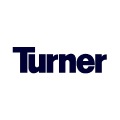

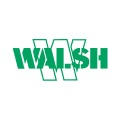
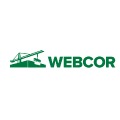
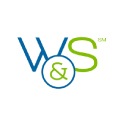
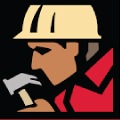
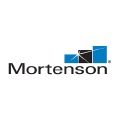
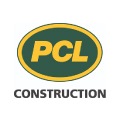

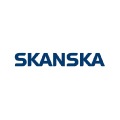
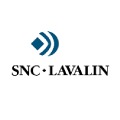
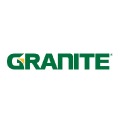
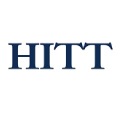
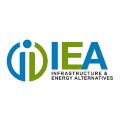

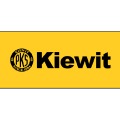
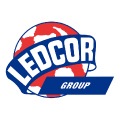
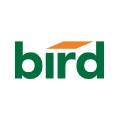

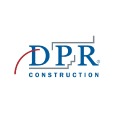

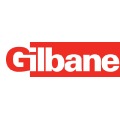
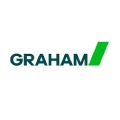
You Are Invited to Contact Us!
If you are interested in our products, services or partnering with us, please feel free to contact us by filling out this form:
or email us at sales@gaorfid.com

